
While strolling the museum, I recently made the acquaintance of a top-hatted and mustachioed gentleman, who was lounging within the confines of Edouard Manet’s “Bar at the Folies-Bergere,” which was being exhibited in my part of the world for the first time. The swell in question was mirrored reflection in the upper right corner of the painting; he was also a sterling artistic depiction of the French Jockey Club dandy, an often neglected dandy subspecies. Baudelaire purported to describe the type in “The Painter of Modern Life” when the splenetic poet was really describing his ideal of the artist as social critic.
Actually, the Jockey Club dandy was the true successor of the Regency dandy: sporty, masculine, socially prominent, and understated in his apparel. His reign lasted from the 1830s until the outbreak of World War I. The Prince de Sagan and Boni de Castellane are two of the finest examples. Baudelaire, although he praised the type in print, avoided them in life. Robert de Montesquiou, although one of them by birth, loathed them. Their reputation received a dire stain as a result of the infamous Charity Sales Bazaar fire on May 4, 1897. Over 140 persons died, mostly women and children. None were dandies, however: It was reported that Jockey Club members used their walking sticks to bludgeon women and children out of the way to make their escape.
In dandy history, the Jockey Club dandy has been unjustly overshadowed by the intellectual-artist dandy of Barbey and Baudelaire, and the aesthetic dandy of Montesquiou. There’s virtually nothing written about him in English; the great dandy-ologist Ellen Moers ignores him entirely. There are, however, several excellent studies in French. And of course there’s Proust’s oeuvre.
Fortunately, as the Manet painting evidences, the Jockey Club dandy was a favorite of painters and draughtsmen. The top image, by Jean Beraud, is entitled “Portrait of a Dandy.” Note the yellow gloves, a favorite of Baudelaire, as well as the sheer horror of the whiskers.
Speaking of Baudelaire, the poet’s meditations on Jockey Club dandies were of course inspired by the work of Constantin Guys, his so-called painter of modern life:
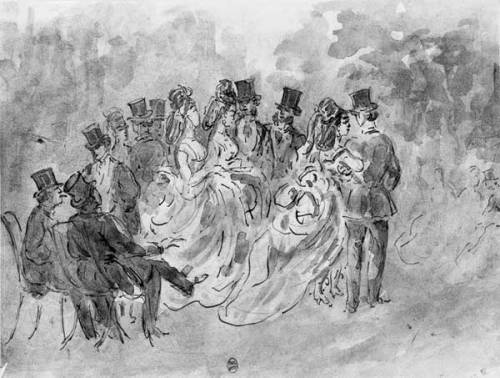
Tissot captured a pride of Jockey Club dandies in “The Circle of the Rue Royale.” Charles Haas, model for Proust’s Swann, is standing far right:
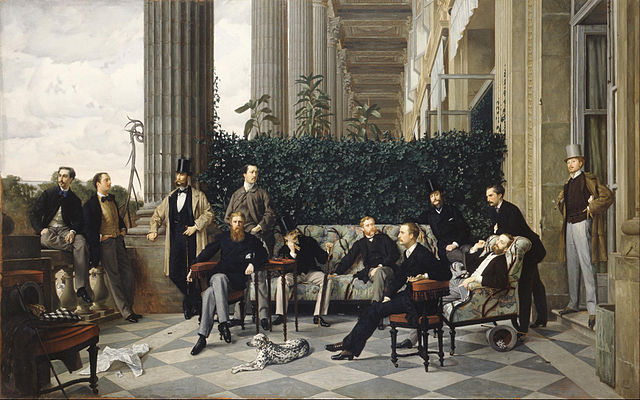
The notorious Dr. Pozzi, who invented a controversial method for treating his women patients, is most notable as a dandy doctor: he served as a second and administrator of first aid to Montesquiou in several of his duel-charades. Sargent captured his sensuality in this full-length portrait:
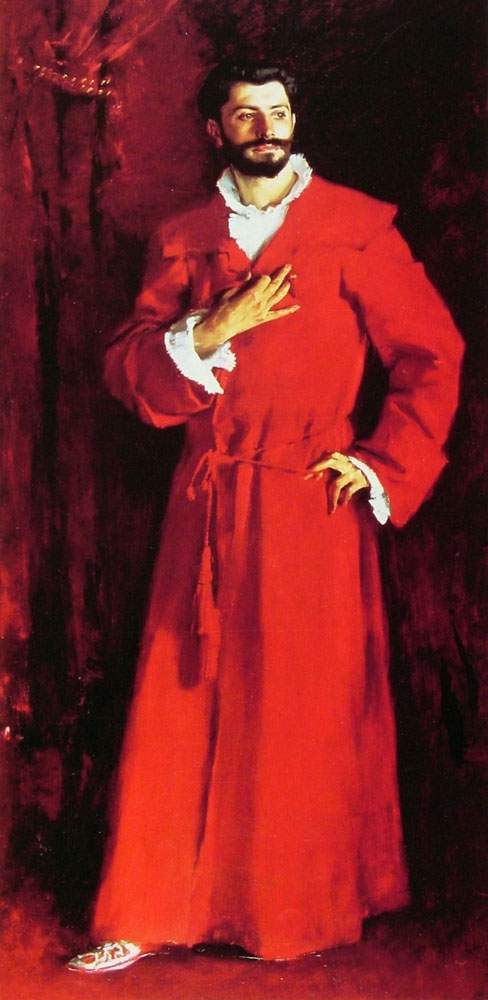
Finally, the type did not escape the notice of illustrators such as Sem. Perhaps all expressions of dandyism end in caricature. — CC
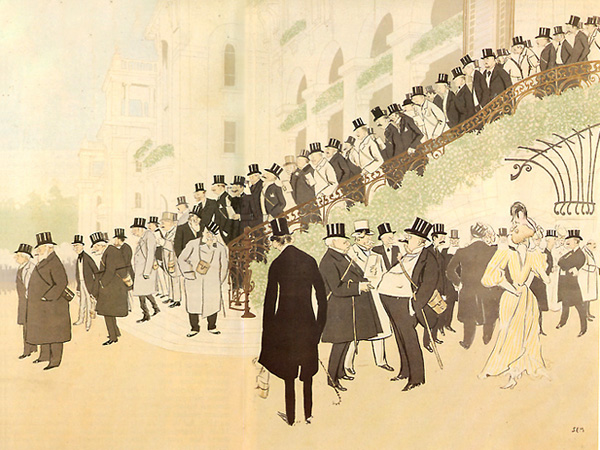

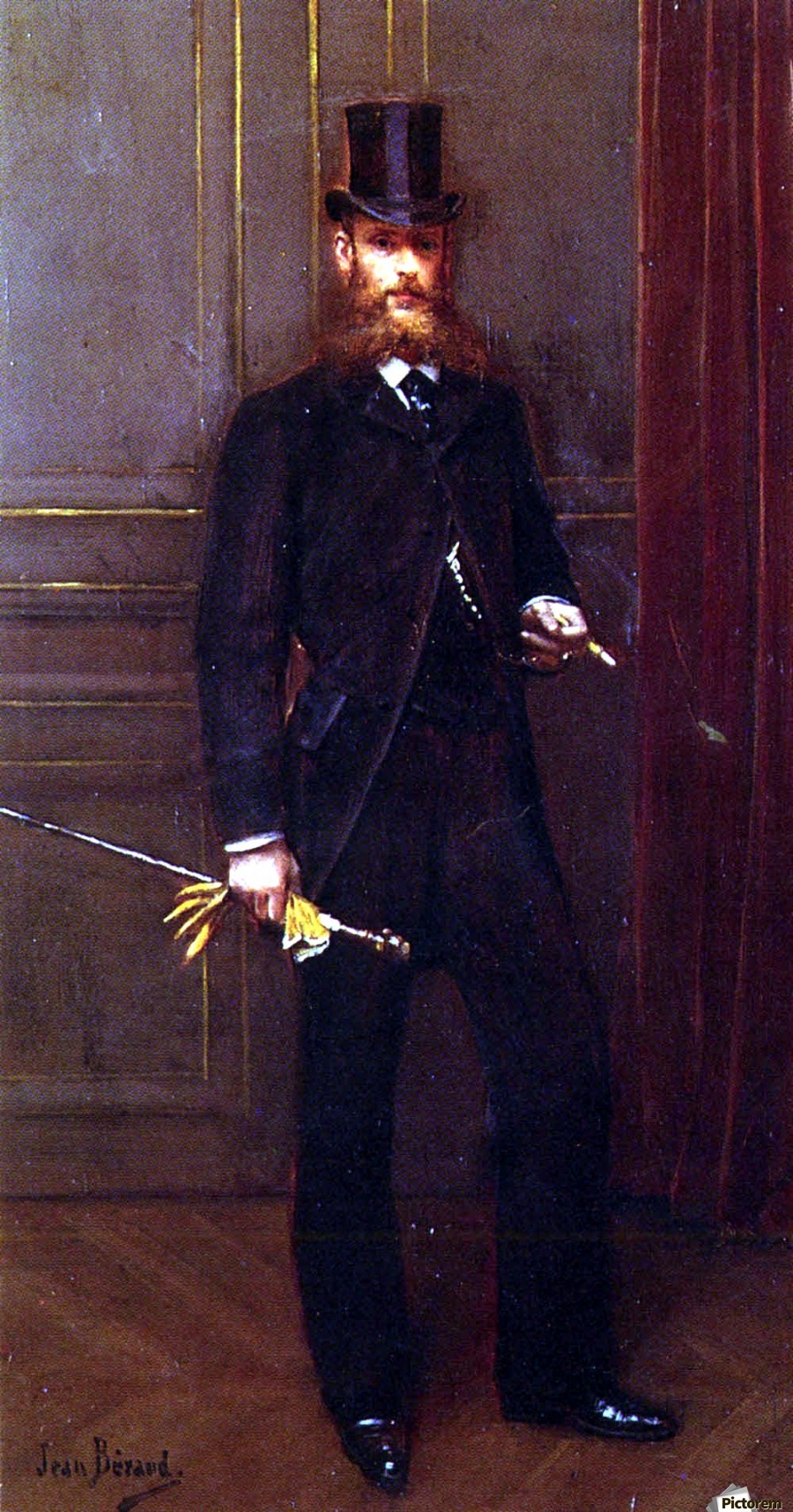
Bloody marvelous images!
M
It is very must a tiny twist of fate to see “Bar at the Folies-Bergere,” since just last week I was in London at the National Gallery searching for this painting, or one of the paintings I was looking to see, when I found out it wasn’t displayed there. I then found out it was at the Courtauld Institute of Art, but the painting was on tour. Now here it is upon Dandyism.net tormenting me. Coincident? I don’t think so. Lovely images by the way.
Oh my, such beautiful images!
I’ve been a fan of Sem ever since I first saw “Gigi”.
Guten Pupen.
I do love your choices, however some of these people would’ve been afforded the title flaneur not dandy. (see Robert Herbert, Impressionism, chapter 2).
also – one should always include the artist, title, and date (and typically the current holding place) when referencing artworks. it would be like mentioning an author’s novel without giving the title of the book you are discussing.
just my two cents.
this is a great lineup of images. this post helps me make better sense of Haas (and Swann). now i ‘get’ the jockey club and it’s importance for Swann’s status. thanks